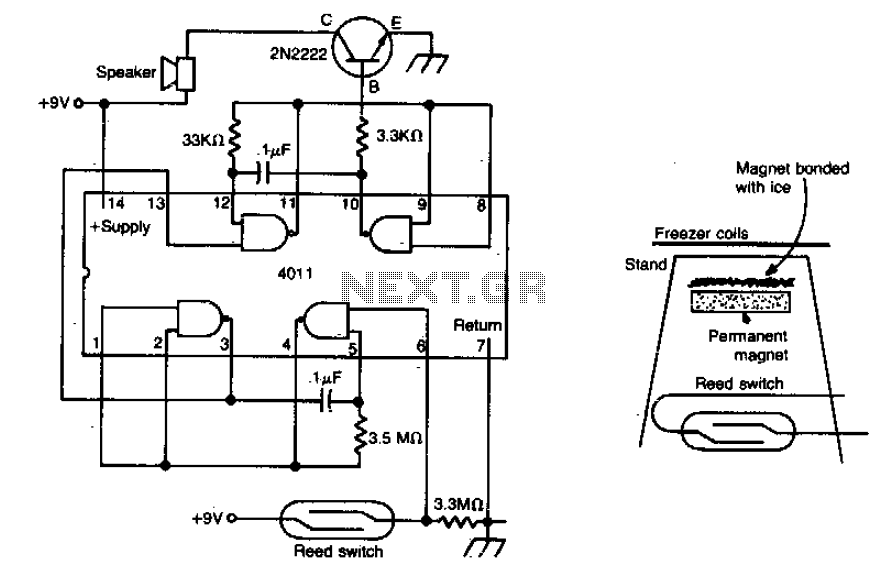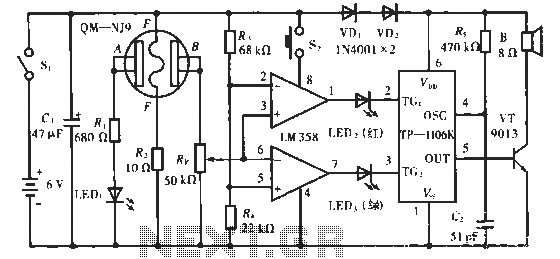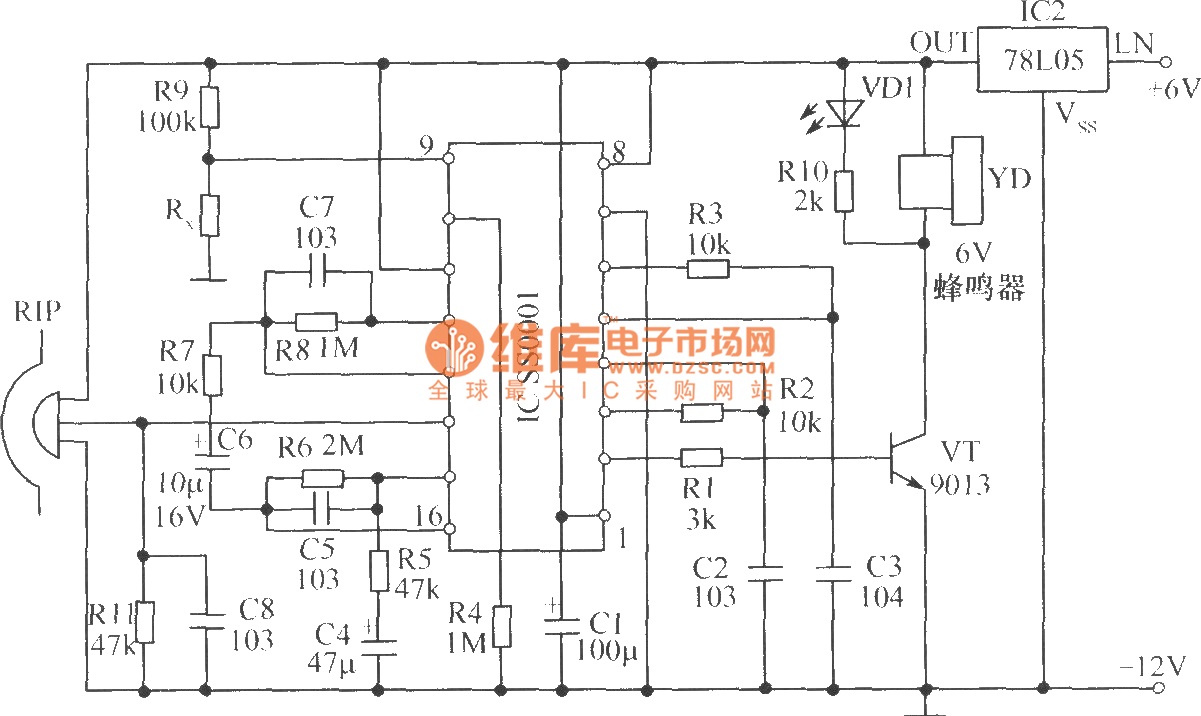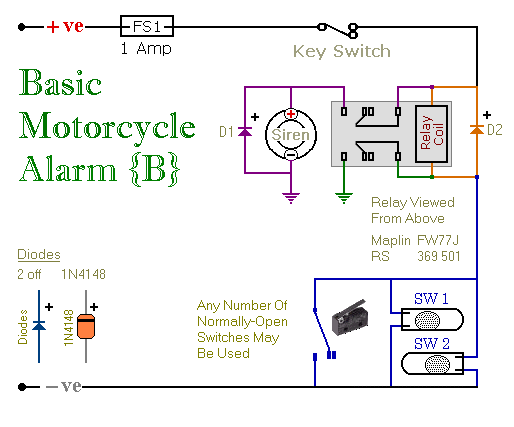
Freezer meltdown alarm

The meltdown consists of a magnet secured to a small stand by ice. A reed switch is positioned beneath the magnet. When the ice melts, the magnet drops onto the switch, closing it and completing the alarm circuit.
The described circuit utilizes a simple yet effective mechanism to trigger an alarm based on the melting of ice. The system comprises a magnet, a stand, a reed switch, and a source of power for the alarm. The reed switch, which is a type of electrical switch operated by an applied magnetic field, is strategically placed beneath the magnet. The magnet is initially held in place by the ice, which serves as a temporary support.
As the ambient temperature rises and the ice begins to melt, the structural integrity of the ice diminishes, leading to the eventual fall of the magnet. Once the magnet falls onto the reed switch, it generates a magnetic field strong enough to close the switch contacts. This action completes the circuit, allowing current to flow from the power source to the alarm.
The alarm can be any type of signaling device, such as a buzzer or a light indicator, designed to alert users of the event. The system's simplicity makes it suitable for various applications, including temperature-sensitive environments where monitoring is essential.
To enhance the reliability of the circuit, considerations regarding the power supply, reed switch specifications, and magnet strength should be taken into account. Additionally, the positioning of the components must ensure that the magnet reliably falls onto the switch without obstruction, guaranteeing consistent operation of the alarm system.The meltdown is a magnet held to a small stand by ice. A reed switch is below the magnet When the ice melts, the magnet falls on the switch, closing it, and completing the alarm circuit. 🔗 External reference
The described circuit utilizes a simple yet effective mechanism to trigger an alarm based on the melting of ice. The system comprises a magnet, a stand, a reed switch, and a source of power for the alarm. The reed switch, which is a type of electrical switch operated by an applied magnetic field, is strategically placed beneath the magnet. The magnet is initially held in place by the ice, which serves as a temporary support.
As the ambient temperature rises and the ice begins to melt, the structural integrity of the ice diminishes, leading to the eventual fall of the magnet. Once the magnet falls onto the reed switch, it generates a magnetic field strong enough to close the switch contacts. This action completes the circuit, allowing current to flow from the power source to the alarm.
The alarm can be any type of signaling device, such as a buzzer or a light indicator, designed to alert users of the event. The system's simplicity makes it suitable for various applications, including temperature-sensitive environments where monitoring is essential.
To enhance the reliability of the circuit, considerations regarding the power supply, reed switch specifications, and magnet strength should be taken into account. Additionally, the positioning of the components must ensure that the magnet reliably falls onto the switch without obstruction, guaranteeing consistent operation of the alarm system.The meltdown is a magnet held to a small stand by ice. A reed switch is below the magnet When the ice melts, the magnet falls on the switch, closing it, and completing the alarm circuit. 🔗 External reference





